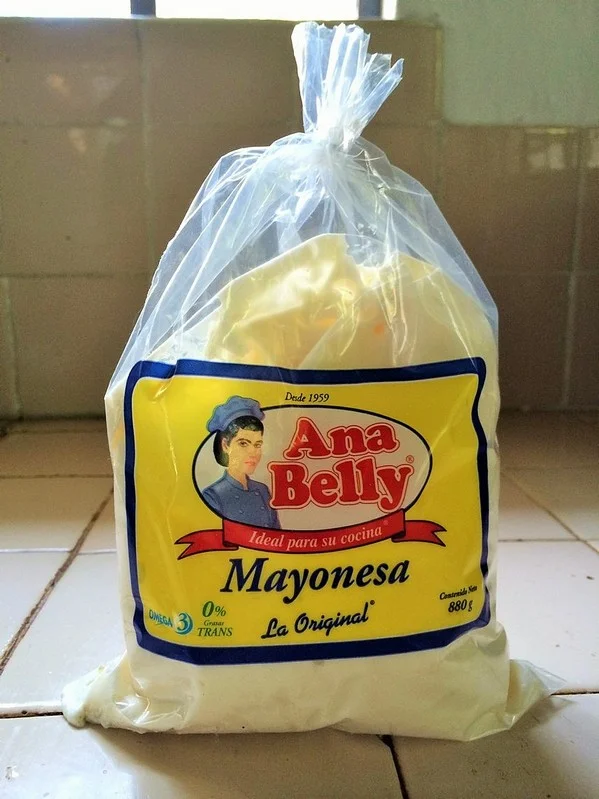What's in Our Pantry and Not in Our Fridge
/After a recent visit from family members it dawned on us that some items we buy at grocery stores in Guatemala either look a little different or are stored differently here. To demonstrate this, here's a look at a few things from our pantry.
Yes, this is regular ol' mayo. We have a squeeze bottle in the fridge and we refill it with this bag that we keep out on a shelf. Turns out it's not necessary to store open mayo in the fridge. It contains enough vinegar and/or lemon juice to provide an environment hostile to the development of harmful bacteria. We only put the bottle in the fridge because we prefer to eat it cold.
Even though the fruits and veggies we buy from the market are more or less (uncertified) organic, the water and soil they are grown in is not necessarily sanitary. Fill a few shot glasses with this stuff, mix it with tap water and soak your produce in the solution for a few minutes before eating.
Guatemala grows some of the best coffee in the Americas but try looking for decaf and you'll end up thirsty. Coffee goes through a pretty invasive chemical process in order to have the caffeine removed. This process is not something performed in Guatemala. Instant decaf is all we've found...and coming from Seattle, instant coffee is barely drinkable. Although I had been drinking only decaf in the States, I quickly returned to the dark side (it's just too good here). Mick has held steady and only drinks decaf. Fortunately some friends and family in the States shipped us some Starbucks decaf Via and beans in January (hence the dust on the cap in the pic). However, Mick has found a silver lining to any headaches. That is her excuse to visit her local favorite coffee shop and get an iced caffeinated vanilla latte.
This is a 1 liter box of lactose free skim milk. It has never been refrigerated. Milk is sold in two forms, powder (which we've not tried), and unrefrigerated boxes. Currently we have 6 boxes of milk in our pantry and 1 in the fridge. 6 boxes is only 1.5 gallons. We'll go through it pretty quick.
Yes, it's perfectly safe to keep this sitting out...so long as it is not opened. It's basically a big version of a kids sized juice box. They are well insulated and sealed. Also because they've never been refrigerated or opened they have a good shelf life.
This milk has a two month shelf life. Can you beat that?
It's relative small size (1 liter or 34 ounces) is very helpful to Guatemalan families that may not have a fridge. They open it and drink it that day before it spoils. It's a smart design that works very well for the culture here.
Ritz and Oreo's are easy to find at stores. Our kids love them. The big difference is the inside packaging. The Oreo bag has 12 small bags containing 4 cookies each. On the plus side this helps with portion control and keep them fresher longer, unfortunately it also creates more non-recyclable trash.
We generally buy very fresh eggs and we never store them in the fridge. To many in the US this might seem like a bad idea but it is the norm here. There's a lot of research showing that it does not matter if you refrigerate them or not.
A study conducted in 2013 (full detail here) monitored two batches of eggs (one refrigerated, one not) over a two week period and found no difference between the two.
There are many other studies claiming health benefits for and against refrigeration. We've found only one adverse affect, our eggs are not pre-washed. Eggs sold in the United States are required by the USDA to be rinsed in hot water, dried and sprayed with a chlorine mist almost as soon as they’re laid. We clean our own eggs which often have chicken poop and occasionally small feathers on them. Not exactly appetizing, but you get over it quickly.
Many things in the kitchen are both different...and very much the same. Exploring and accepting the differences is one of the many things that makes life so much fun here.
Know someone who might enjoy this article? Please pass it along using one of the Share buttons below. It would mean a lot to us. ☺








